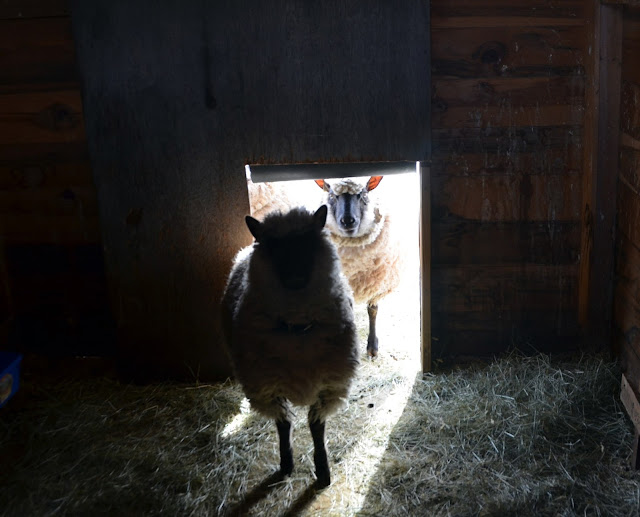Remember my post about the poisonous bushes in my back yard? Well...I keep finding chewed-up yew branches on the back deck. 😒
So, to keep the crazy pooch from inadvertently committing suicide, today I found my (dilapidated) loppers and marched out there to end things once and for all with those bushes.
My nemeses:
There was clear evidence of where Thane has been pulling branches off:
I had hacked down one bush already, a few weeks ago, and at the time, I thought it was really hard work. Today, for some reason, it seemed easier, and it didn't take long before those bushes looked like this:
I will still have to go back as the snow continues to recede (although I hear we're maybe getting more this weekend!!) and trim back any branches that are buried - and then I'll have to figure out how to remove the stumps once the ground is soft. Hmm...I wonder how Mom and Dad feel about draft horses... :D
In other news, it was a REALLY nice day, and Thane and I got to take a nice long walk in the woods. It was a bit foggy this morning, but as we walked, the sun began to shine through the trees, and I just had to get out the camera.
Lol, for one photo, I decided that I needed to drop to one knee to get a better angle. This is a dangerous move, because it goes something like this:
1. Kneel
2. Quickly snap a couple photos
3. Brace for impact
4. CRASH!!
The cause of the crash? This innocent-looking dude:
Yep, another one of Thane's quirks to add to the list - if he sees me crouching or kneeling, he just HAS to charge over at TOP SPEED and see what in the world I'm up to...and he has ZERO sense of personal space. That's my boy. Sigh.
Oh! I also saw cool tracks.
I'm thinking maybe Raccoon?
Anyway, I hope that everyone else had a nice Wednesday too! :)

















































